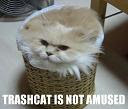Elizabeth Orton Jones' life was a testament to the power of excellent parenting. Elizabeth was born in Illin

ois on June 24, 1910. The eldest of three children, her father was a violinist and her mother a writer and pianist. They encouraged all of their children to be creative, and were genuinely interested in their thoughts and ideas. They structured time each day for the children to read and write, and they urged them to examine art and to draw.
Elizabeth's childhood home was filled with music, laughter and interesting guests. She loved hiding under the table and listening to the grown-ups talk. Her lovingly indulgent parents included their children in almost everything they did, and Elizabeth grew up secure in the notion that she was loved. Her childhood appears to have been as close to ideal as it comes.
After college, Elizabeth went to France to study painting. It was there she discovered her love for drawing children. When she returned to America, she had produced enough art to have a one-person show at the Smithsonian Institution. (Is that still possible?)
Her time in France not only inspired her art, it moved her to write and illustrate her first children's book.
Ragman of Paris and His Ragamuffins appeared in 1937. In less than 10 years, Elizabeth was accepting the 1945 Caldecott Medal for her illustrations in Rachel Field's
Prayer for a Child.
In between those years, Elizabeth took up residence in Mason, New Hampshire. She stumbled upon a run-down old house while delivering illustrations she'd done for an author who lived in Mason. It had no electricity, running water, or heat, but she fell in love with the place. She had just enough money to buy it, having received her first royalty check for her picture book
Twig in 1942 for the exact asking price -- $2,000. She named the place
Misty Meadows, and settled in for the next 60+ years.

After Elizabeth won the Caldecott, she caught the eye of an editor looking for an illustrator for Golden Books' 1948 retelling of
Little Red Riding Hood. Elizabeth had no interest in the job, and turned it down several times. She finally relented when the money became worth her while. She planned to use it to fix up her beloved
Misty Meadows, which she actually used as a model for some of the pictures. She used another Mason house as well, which is now
Pickety Place.
By all accounts, Elizabeth lived a happy and fulfilled life in Mason. Around 1953, she began working on a series of murals at
Crotched Mountain Rehabilitation Center in nearby Greenfield. She devoted much of her time over the next 50 years to Crotched Mountain. She became so caught up in working directly with the children, that she never quite finished the murals.
In 1971, she helped establish
Andy's Playhouse, a children's community theater. She wrote plays and made costumes for the theater until 1985. Elizabeth took the respect and love showered upon her in childhood, and did the same for the children in her life at Crotched Mountain and within the community of Mason. Elizabeth, who never had children of her own, once said, "I think I would ruin them. I'd either work all the time and they'd run wild, or I'd teach them so much they'd hate me."
I don't think anybody ever hated Elizabeth. In fact, she became a much loved figure in her corner of New Hampshire, and was affectionately dubbed "Twig" after the character in the book that bought
Misty Meadows.
Elizabeth died on May 10, 2005 in Peterborough, New Hampshire. She was 94.


































